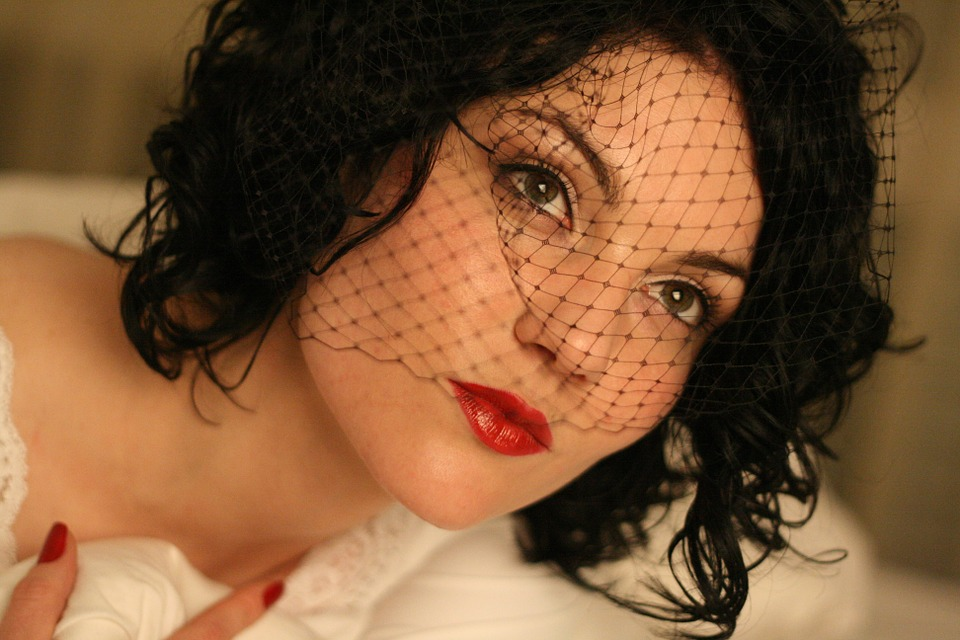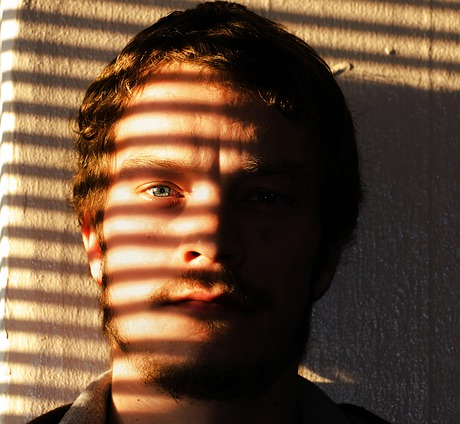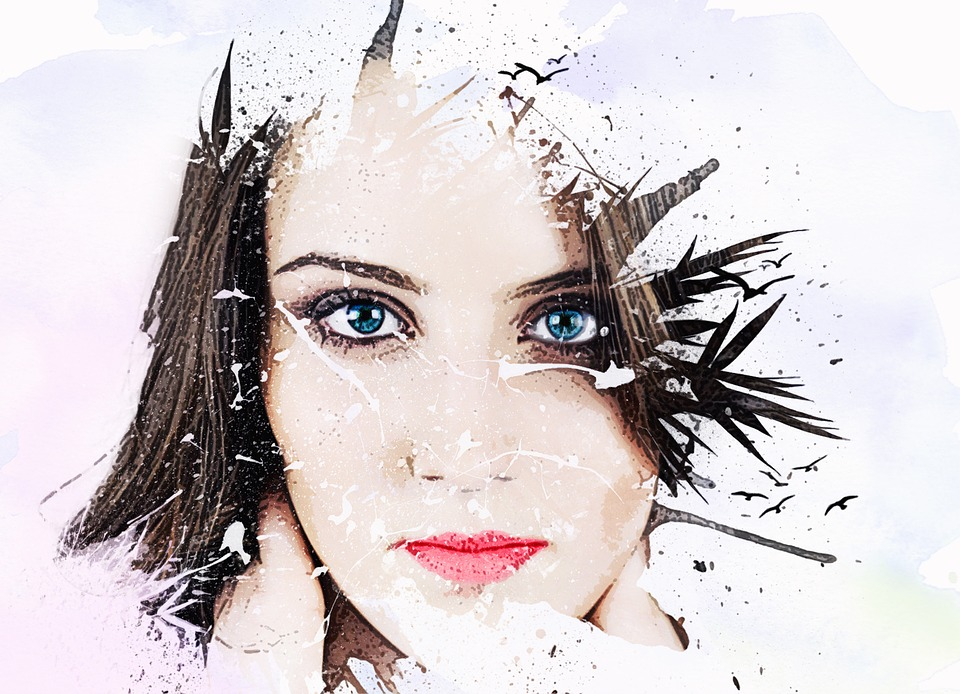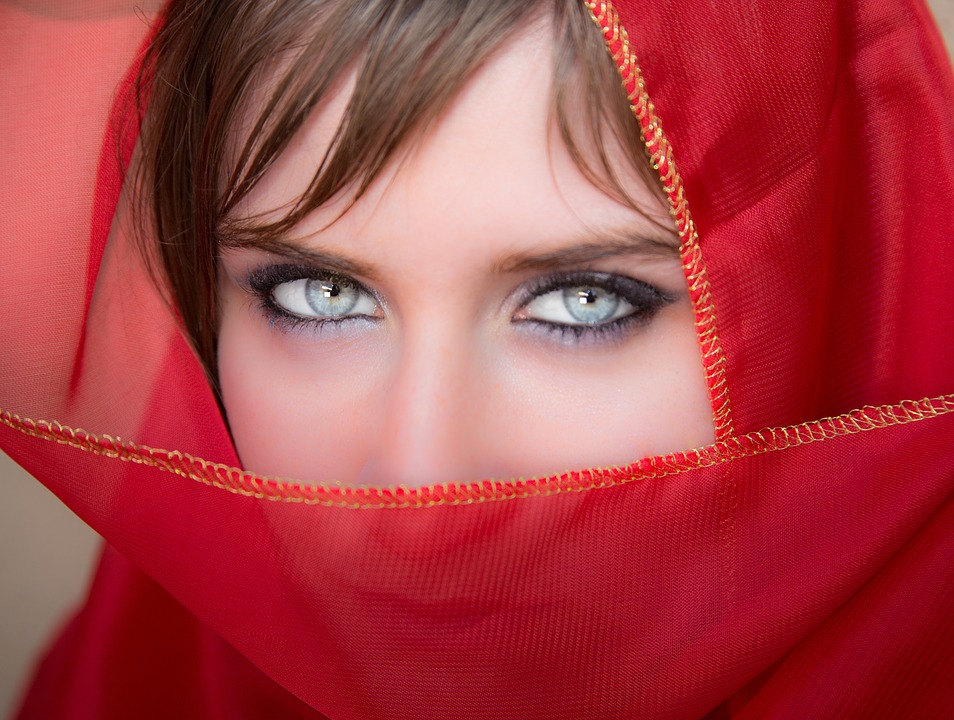 Acne commonly known as ‘pimples’ is a condition, which develops in and around the hair follicles and their oil-producing glands called the 'sebaceous glands.' In mild to moderate cases, there may be black heads (comedones), white heads (papules) or pustules. In severe cases, there are nodules, cysts and abscess, which lead to scarring, if not, treated on time. Genetics is thought to be the cause in 80% of cases. Acne primarily affects skin with a greater number of oil glands, including the face, upper part of the chest, and back.
Acne commonly known as ‘pimples’ is a condition, which develops in and around the hair follicles and their oil-producing glands called the 'sebaceous glands.' In mild to moderate cases, there may be black heads (comedones), white heads (papules) or pustules. In severe cases, there are nodules, cysts and abscess, which lead to scarring, if not, treated on time. Genetics is thought to be the cause in 80% of cases. Acne primarily affects skin with a greater number of oil glands, including the face, upper part of the chest, and back.
Although acne is common in teenage years, it can persist or occur for the first time in adult life. Waiting to 'outgrow' acne can be a serious mistake, since medical treatment can improve your appearance and prevent the development of severe scars. Many treatment options are available to improve the appearance of acne, including lifestyle changes, procedures, and medications. Early and aggressive treatment is advocated to lessen the overall long-term impact to individuals.
Rosacea is a common skin condition that causes redness on the face and produces small, red, pus-filled bumps. Although rosacea can occur in anyone, it most commonly affects middle-aged women who have fair skin. Rosacea can be mistaken for acne, an allergic reaction or other skin problems, especially in Indian skin. Rosacea affects all ages and has four subtypes, three affecting the skin and the fourth affecting the eyes (ocular rosacea). The exact cause of rosacea is unknown. Triggers that cause episodes of flushing and blushing play a part in its development. Exposure to temperature extremes, strenuous exercise, and heat from sunlight, severe sunburn, stress, anxiety, cold wind, and moving to a warm or hot environment from a cold one, such as heated shops and offices during the winter, can each cause the face to become flushed.
Some common triggers thought to affect rosacea include hot and cold weather extremes, sun exposure, mental stress, and hot or spicy food and drinks. Medications and topical irritants have also been known to trigger rosacea flares. So, one has to be extremely careful while treating it.
Eczema refers to a chronic inflammatory skin condition, characterized by dry skin, with patches that are red and intensely itchy. These patches of eczema may ooze, become scaly, crusted, or hardened. The rashes most commonly appear on the face, back of the knees, wrists, hands, or feet. It may also affect other areas as well. It is common in children, but can occur at any age. Symptoms can range from mild to severe, and the condition can negatively impact quality of life. Stress may be a trigger for eczema. Some people may suffer from only hand and feet eczema.
The most common type of eczema is known as atopic dermatitis , or atopic eczema. Atopic refers to a group of diseases with an often inherited tendency to develop other allergic conditions, such as asthma and hay fever.
Psoriasis is a long-lasting autoimmune disease which is characterized by patches of abnormal skin. These skin patches are typically red, itchy, and scaly. They may vary in severity from small and localized to complete body coverage.
There are five main types of psoriasis: plaque, guttate, inverse, pustular, and erythrodermic. Typically it is an inflammatory disease that causes red, raised, thick and scaly patches on the skin. It typically affects the outside of the elbows, knees, lower back or scalp, though it can appear anywhere on body. The patches may cause itching, burning and stinging of the skin. It may be associated with other serious health conditions such as diabetes, heart disease, lipid abnormalities, depression etc.
Urticaria from the Latin urtica, "nettle" from urere, "to burn" commonly referred to as hives, is a kind of skin rash notable for pale red, raised, itchy bumps. Hives may cause a burning or stinging sensation. They are frequently caused by allergic reactions; however, there are many non-allergic causes. Most cases of hives lasting less than six weeks (acute urticaria) are the result of an allergic trigger. Chronic urticaria (hives lasting longer than six weeks) is rarely due to an allergy.
The majority of chronic hives cases have an unknown cause. In perhaps more than 50% of patients with chronic idiopathic urticaria, it is caused by an autoimmune reaction. These appear suddenly, either as a result of body's reaction to certain allergens or for unknown reasons. They can appear anywhere on body, including face, lips, tongue, throat, ears, scalp, palms and soles.
They can itch, burn or sting and characteristically last no longer than 6-12 hours. Hives can change size rapidly and move around, disappearing in one place and reappearing in other places, often in a matter of hours.
Fungal infection is a common infection in the tropics. There are different types of fungal infection, the very common and include athlete's foot, jock itch, ringworm, and yeast infections but most of them favour areas of the body which are moist and sweaty like the feet, toes, groins, buttocks and nails. Symptoms depend on the area affected, but can include skin rash or vaginal infection resulting in abnormal discharge. These are highly contagious and should be treated at the earliest.
Vitiligo is a skin disorder which presents as white spots and patches on the skin. Vitiligo is caused by a loss of pigment (melanin) in the skin, due to destruction of pigment-forming cells (melanocytes). The exact cause of the destruction of these cells is not known. Although vitiligo affects all races equally, it is more noticeable in dark-skinned people. Common sites include bony surfaces, around body orifices, body folds but other areas can be affected.
Neurodermatitis (also called as lichen simplex chronicus) starts with a patch of itchy skin. Scratching makes it even itchier. The more the skin is scratched, rubbed, or even touched, the more it itches. The itch can become so intense that it disrupts sleep. This itch-scratch cycle causes the affected skin to become thick and leathery. Commonly affected areas are the neck, wrist, forearm, thigh, ankle and sometimes pubic area. Stress can worsen the itching in neurodermatitis.
Hyperhidrosis or excessive perspiration is an uncomfortable and embarrassing condition affecting mainly underarms, palms and soles. It can sometimes be associated with medical conditions, such as thyroid disorders. In many cases, the condition can be improved by local application of medication. Nowadays, botulinum toxin injections have been used to achieve good control of sweating on the palms and underarms, lasting for several months after each treatment.
Lichen planus is a non-infectious, itchy rash that can affect many areas of the body such as arms, legs and trunk, mouth (oral lichen planus), nails, scalp vulva, vagina and penis. It causes itching on body while there is pain and swelling in mouth and genital areas. The causes of Lichen planus remains unclear but one theory is that lichen planus is an autoimmune disease. Some medicines can cause a rash that looks like lichen planus. There may be a link between lichen planus and infection with the hepatitis C virus .
Viral Warts are common and can be a nuisance. They can grow on any part of the body and may bleed if injured. They are contagious and may spread from one part of the body to the other and to other people. On pressure areas like palms and soles, they appear flat. Warts on the sole( plantar warts) grow inward from the pressure of standing and walking and are often very painful. Warts on the genitalia are usually sexually acquired.
Keloids can develop in any place that an abrasion has occurred. They can be the result of acne, insect bites, scratching, burns, or other skin trauma. Keloid scars can develop after surgery. They are more common in some sites such as central chest, the back and shoulders and the ear lobes.
Corns & Calluses are areas of hard, thickened skin that develop when the skin is exposed to excessive pressure or friction. They commonly occur on the feet and can cause pain and discomfort when you walk. They won't get better unless the cause of the pressure is removed. If the cause isn't removed, the skin could become thicker and more painful over time.
Skin Growth are found in most people as they age. These include milia, seborrhoeic keratoses, sebaceous hyperplasia , syringomas and skin tags. Milia are tiny pearly white or yellowish bumps of skin that occur around the cheeks, nose, eyes and eyelids, forehead.
Seborrhoeic keratoses are small brown warty growths common on the face and scalp.
Sebaceous hyperplasia are enlarged oil glands often in people with oily complexions. They are skin coloured small bumps usually on the forehead, nose and cheeks.
Syringomas are small sweat gland growths generally found below the eyes and are more common in women. Skin tags are often found in plump or pregnant people. They are usually on the neck, armpits, breasts or buttocks.
Skin Concerns
 Acne commonly known as ‘pimples’ is a condition, which develops in and around the hair follicles and their oil-producing glands called the 'sebaceous glands.' In mild to moderate cases, there may be black heads (comedones), white heads (papules) or pustules. In severe cases, there are nodules, cysts and abscess, which lead to scarring, if not, treated on time. Genetics is thought to be the cause in 80% of cases. Acne primarily affects skin with a greater number of oil glands, including the face, upper part of the chest, and back.
Acne commonly known as ‘pimples’ is a condition, which develops in and around the hair follicles and their oil-producing glands called the 'sebaceous glands.' In mild to moderate cases, there may be black heads (comedones), white heads (papules) or pustules. In severe cases, there are nodules, cysts and abscess, which lead to scarring, if not, treated on time. Genetics is thought to be the cause in 80% of cases. Acne primarily affects skin with a greater number of oil glands, including the face, upper part of the chest, and back.

Although acne is common in teenage years, it can persist or occur for the first time in adult life. Waiting to 'outgrow' acne can be a serious mistake, since medical treatment can improve your appearance and prevent the development of severe scars. Many treatment options are available to improve the appearance of acne, including lifestyle changes, procedures, and medications. Early and aggressive treatment is advocated to lessen the overall long-term impact to individuals.
Rosacea is a common skin condition that causes redness on the face and produces small, red, pus-filled bumps. Although rosacea can occur in anyone, it most commonly affects middle-aged women who have fair skin. Rosacea can be mistaken for acne, an allergic reaction or other skin problems, especially in Indian skin. Rosacea affects all ages and has four subtypes, three affecting the skin and the fourth affecting the eyes (ocular rosacea). The exact cause of rosacea is unknown. Triggers that cause episodes of flushing and blushing play a part in its development. Exposure to temperature extremes, strenuous exercise, and heat from sunlight, severe sunburn, stress, anxiety, cold wind, and moving to a warm or hot environment from a cold one, such as heated shops and offices during the winter, can each cause the face to become flushed.
Some common triggers thought to affect rosacea include hot and cold weather extremes, sun exposure, mental stress, and hot or spicy food and drinks. Medications and topical irritants have also been known to trigger rosacea flares. So, one has to be extremely careful while treating it.
Eczema refers to a chronic inflammatory skin condition, characterized by dry skin, with patches that are red and intensely itchy. These patches of eczema may ooze, become scaly, crusted, or hardened. The rashes most commonly appear on the face, back of the knees, wrists, hands, or feet. It may also affect other areas as well. It is common in children, but can occur at any age. Symptoms can range from mild to severe, and the condition can negatively impact quality of life. Stress may be a trigger for eczema. Some people may suffer from only hand and feet eczema.

The most common type of eczema is known as atopic dermatitis , or atopic eczema. Atopic refers to a group of diseases with an often inherited tendency to develop other allergic conditions, such as asthma and hay fever.
Psoriasis is a long-lasting autoimmune disease which is characterized by patches of abnormal skin. These skin patches are typically red, itchy, and scaly. They may vary in severity from small and localized to complete body coverage.
There are five main types of psoriasis: plaque, guttate, inverse, pustular, and erythrodermic. Typically it is an inflammatory disease that causes red, raised, thick and scaly patches on the skin. It typically affects the outside of the elbows, knees, lower back or scalp, though it can appear anywhere on body. The patches may cause itching, burning and stinging of the skin. It may be associated with other serious health conditions such as diabetes, heart disease, lipid abnormalities, depression etc.
Urticaria from the Latin urtica, "nettle" from urere, "to burn" commonly referred to as hives, is a kind of skin rash notable for pale red, raised, itchy bumps. Hives may cause a burning or stinging sensation. They are frequently caused by allergic reactions; however, there are many non-allergic causes. Most cases of hives lasting less than six weeks (acute urticaria) are the result of an allergic trigger. Chronic urticaria (hives lasting longer than six weeks) is rarely due to an allergy.
The majority of chronic hives cases have an unknown cause. In perhaps more than 50% of patients with chronic idiopathic urticaria, it is caused by an autoimmune reaction. These appear suddenly, either as a result of body's reaction to certain allergens or for unknown reasons. They can appear anywhere on body, including face, lips, tongue, throat, ears, scalp, palms and soles.
They can itch, burn or sting and characteristically last no longer than 6-12 hours. Hives can change size rapidly and move around, disappearing in one place and reappearing in other places, often in a matter of hours.
Fungal infection is a common infection in the tropics. There are different types of fungal infection, the very common and include athlete's foot, jock itch, ringworm, and yeast infections but most of them favour areas of the body which are moist and sweaty like the feet, toes, groins, buttocks and nails. Symptoms depend on the area affected, but can include skin rash or vaginal infection resulting in abnormal discharge. These are highly contagious and should be treated at the earliest.

Vitiligo is a skin disorder which presents as white spots and patches on the skin. Vitiligo is caused by a loss of pigment (melanin) in the skin, due to destruction of pigment-forming cells (melanocytes). The exact cause of the destruction of these cells is not known. Although vitiligo affects all races equally, it is more noticeable in dark-skinned people. Common sites include bony surfaces, around body orifices, body folds but other areas can be affected.
Neurodermatitis (also called as lichen simplex chronicus) starts with a patch of itchy skin. Scratching makes it even itchier. The more the skin is scratched, rubbed, or even touched, the more it itches. The itch can become so intense that it disrupts sleep. This itch-scratch cycle causes the affected skin to become thick and leathery. Commonly affected areas are the neck, wrist, forearm, thigh, ankle and sometimes pubic area. Stress can worsen the itching in neurodermatitis.
Hyperhidrosis or excessive perspiration is an uncomfortable and embarrassing condition affecting mainly underarms, palms and soles. It can sometimes be associated with medical conditions, such as thyroid disorders. In many cases, the condition can be improved by local application of medication. Nowadays, botulinum toxin injections have been used to achieve good control of sweating on the palms and underarms, lasting for several months after each treatment.
Lichen planus is a non-infectious, itchy rash that can affect many areas of the body such as arms, legs and trunk, mouth (oral lichen planus), nails, scalp vulva, vagina and penis. It causes itching on body while there is pain and swelling in mouth and genital areas. The causes of Lichen planus remains unclear but one theory is that lichen planus is an autoimmune disease. Some medicines can cause a rash that looks like lichen planus. There may be a link between lichen planus and infection with the hepatitis C virus .

Viral Warts are common and can be a nuisance. They can grow on any part of the body and may bleed if injured. They are contagious and may spread from one part of the body to the other and to other people. On pressure areas like palms and soles, they appear flat. Warts on the sole( plantar warts) grow inward from the pressure of standing and walking and are often very painful. Warts on the genitalia are usually sexually acquired.
Keloids can develop in any place that an abrasion has occurred. They can be the result of acne, insect bites, scratching, burns, or other skin trauma. Keloid scars can develop after surgery. They are more common in some sites such as central chest, the back and shoulders and the ear lobes.
Corns & Calluses are areas of hard, thickened skin that develop when the skin is exposed to excessive pressure or friction. They commonly occur on the feet and can cause pain and discomfort when you walk. They won't get better unless the cause of the pressure is removed. If the cause isn't removed, the skin could become thicker and more painful over time.
Skin Growth are found in most people as they age. These include milia, seborrhoeic keratoses, sebaceous hyperplasia , syringomas and skin tags. Milia are tiny pearly white or yellowish bumps of skin that occur around the cheeks, nose, eyes and eyelids, forehead.
Seborrhoeic keratoses are small brown warty growths common on the face and scalp.
Sebaceous hyperplasia are enlarged oil glands often in people with oily complexions. They are skin coloured small bumps usually on the forehead, nose and cheeks.
Syringomas are small sweat gland growths generally found below the eyes and are more common in women. Skin tags are often found in plump or pregnant people. They are usually on the neck, armpits, breasts or buttocks.